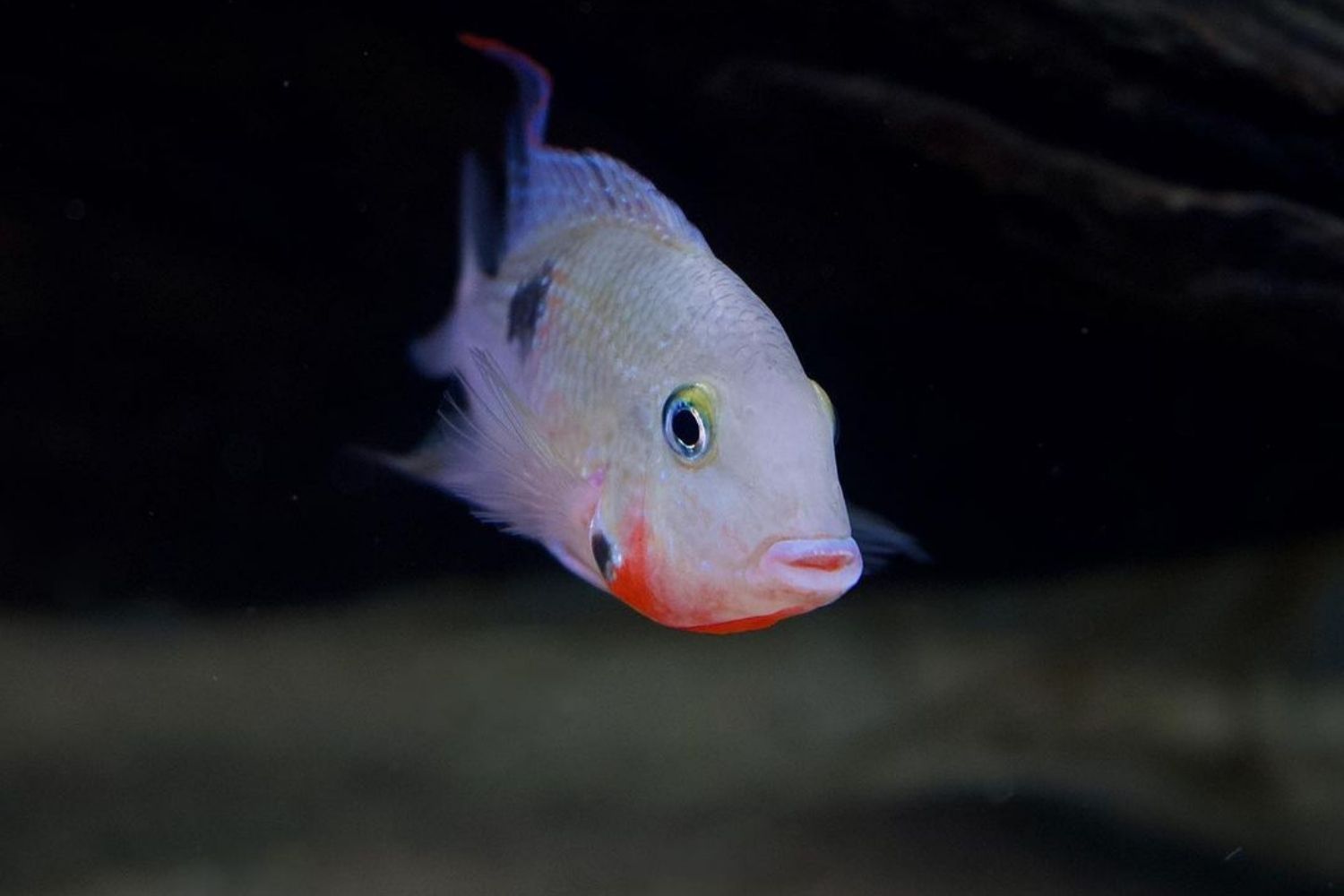Firemouth Cichlid is one of the most beautiful species for all freshwater aquarium enthusiasts. This fish stands out for its amazing coloration of pearlescent, lustrous turquoise-blue, red-orange, and elegant shape. It is a little difficult to maintain this fish healthy, although everything will be easier with our care guide of Firemouth Cichlid.
Our Complete care guide has all the information needed to provide the proper environment for this fish to grow and why not reproduce. You will get the answer to all your questions about how to maintain this fish, starting with the setup of the aquarium, picking up the tank size, water parameters, and other equipment. By the end of this article, you will be able to deal with the common diseases of this fish, follow the proper diet, and why not breed this fish.
Overview
The Firemouth Cichlid is a famous ornamental freshwater fish, also known as Thorichthys Meeki. This fish has wide environmental tolerances, and it is rarely considered a “pest.”
Firemouth Cichlids have a very fast growth rate and are known for advanced parental care. They are considered to be semi-aggressive but may become very aggressive when breeding to defend their eggs. They can live for about 8-10 years.
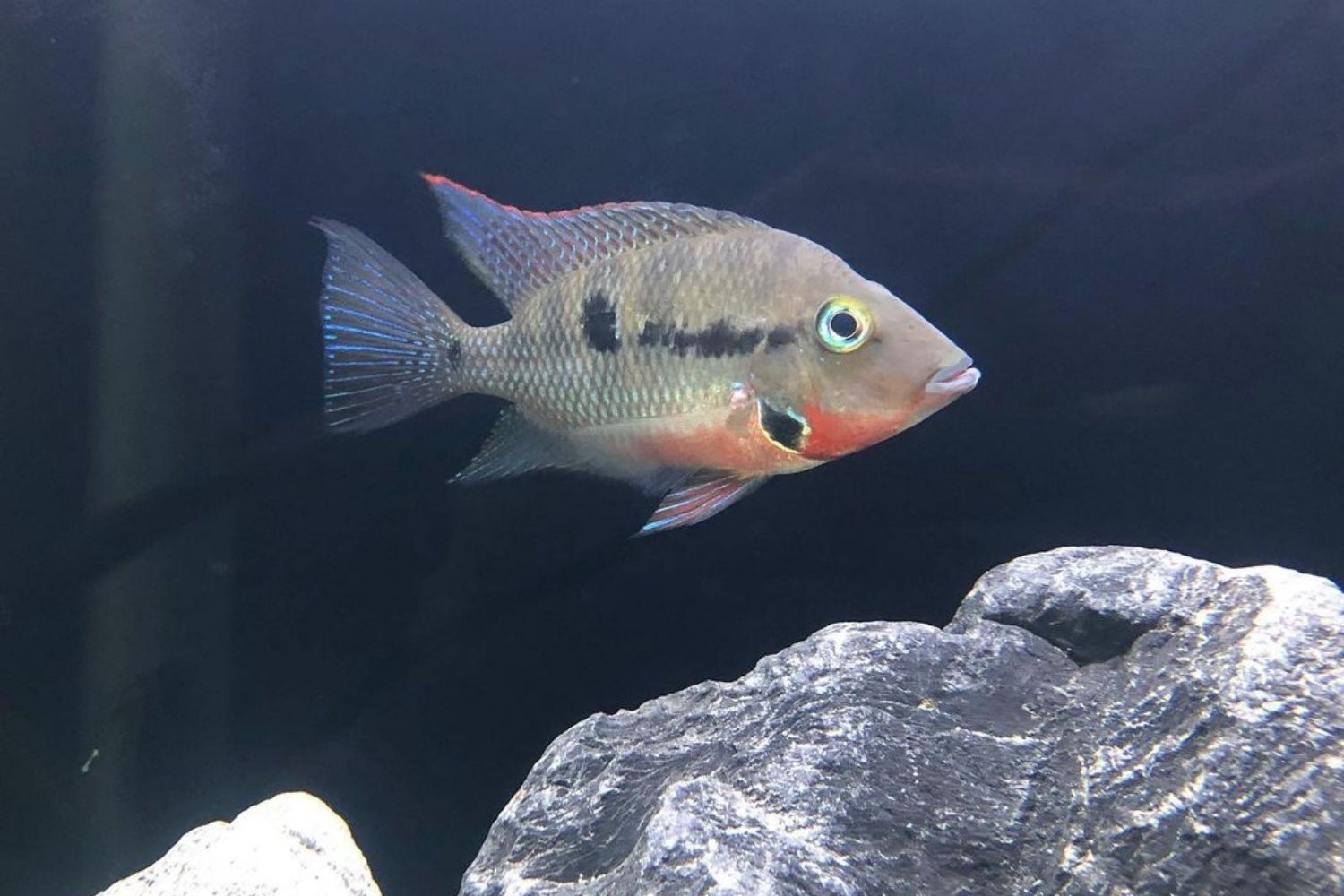
A female Firemouth Cichlid.
The appearance of the Firemouth Cichlid stands out in the aquarium fauna, and this is what makes them famous. It is similar to Flowerhorn Cichlid and Red Devil Cichlids in types of colorations and pearlescent glow.
It is a whole other experience when you get to see this species in person. They have a charming colorization and an elegant shape. It has a notable red coloring on the edges of its scales that make a wonderful contrast with its pearlescent and lustrous turquoise-blue-hued body in its normal state.
| Scientific name | Thorichthys Meeki |
| Origin | Mexico, Belize, and Guatemala |
| Temperament | Semi-aggressive |
| Diet type | Omnivores |
| Substrate | Muddy, leaf litter, and submerged branches |
| Lighting | Moderate |
| Temperature | 75°F to 86°F (24°C to 30°C) |
| pH | 6.5 – 8.0 |
| Hardness | 8 – 15 dGH |
| Minimum Tank Size | 30+ gallons (double it if community tank) |
| Size | Males 6 inches, females 5 inches |
Behavior & Temperament
Firemouth Cichlids are considered to be semi-aggressive but tend to fight to the death with other fish when breeding. This makes them territorial, and they may also eat smaller fishes, but similar sizes would work great. Other groups of peaceful upper-water fishes can also get along with this fish. Therefore, Thorichthys species are best maintained in groups with 8+ individuals.
Size & Lifespan
The average Firemouth Cichlid sizes vary depending on the sex of the fish, although males can grow in a size of 6 inches and females around 5 inches and have a fast growth rate. However, you have to take care of them to maintain them healthy and live as long as possible. The most common lifespan is 8 to 10 years, but with a great caring guide, they can live up to 15 years.
Origin & Natural Habitat
Firemouth Cichlids have a wide distribution and are found across Mexico, Belize and Guatemala. They occupy lowland habitats such as permanent and seasonal lagoons and pools, slow-flowing backwaters of larger rivers, and also smaller streams.
These habitats tend to be lentic or slow-flowing, shallow with a depth <1.5 meters, with a soft or mud substrate with the leaf litter coverage and submerged branches. These fish species can also live in upland aquatic habitats being influenced by the clearer water and higher water velocities, although the lowland is their comfort habitat.
Food & Diet
Thorichthys species are omnivores and often feed on small crustaceans such as copepods and cladocerans. Other invertebrates, mollusks, and organic detritus are also delicious meals for this fish. These fish are relatively unfussy but should not be offered a varied diet less than a high quality, plus live or frozen chironomid larvae (bloodworm), Artemia, Tubifex, mosquito larvae, etc.
The dried products should contain vegetables, and it is a great opportunity to use automatic fish feeders to help you with the feeding quantity and frequency. In this case, a proportion of Spirulina or similar would be great. Gelatine-bound and other homemade recipes containing a mixture of dried fish food, fresh fruit, and vegetables, and puréed shellfish all work well and can be cut for a great diet.
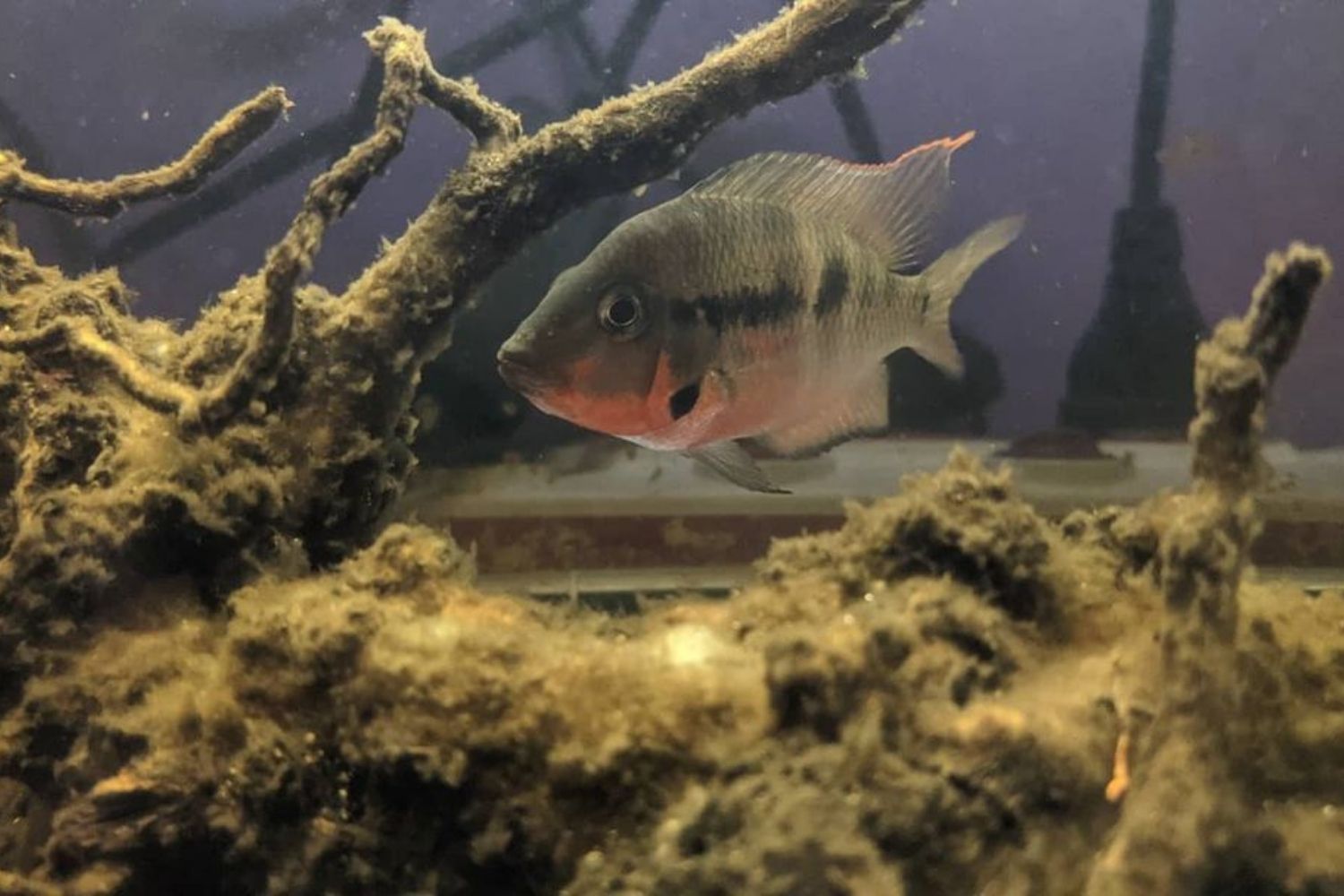
Firemouth Cichlid likes to play around your aquarium plants and woods.
Care & Tank Requirements
Firemouth Cichlid care guide can be quite easy for those who are used to managing the tank requirements to provide the main condition for this fish to live a healthy life.
They are not easy to be taken care of, yet we cannot say that they have a high difficulty level to maintain. For these fish, it is very important to maintain the proper water condition. Therefore, they can get sensitive if water parameters are not taken seriously enough. The substrate should be made of soft sand so they can dig spaces to protect the newborns.
They should be kept separate from other fish when breeding because they tend to be aggressive and fight to the death. A temporary wall or another kind of border in the tank would be helpful enough.
The size of the tank is also important when talking about Firemouth Cichlids because they tend to be territorial, especially when they breed. This happens mostly with Cichlid fishes. Jaguar Cichlids tend to have similar characteristics. The size also depends on the number of fish that you choose to have. They like to have extra space to move around.
The young fish require an aquarium 4 feet in size, and the adult ones a minimum of 6 feet. It is recommended to add objects, for example, a flowerpot or wooden sheets, to use them as caves or even lay their eggs.
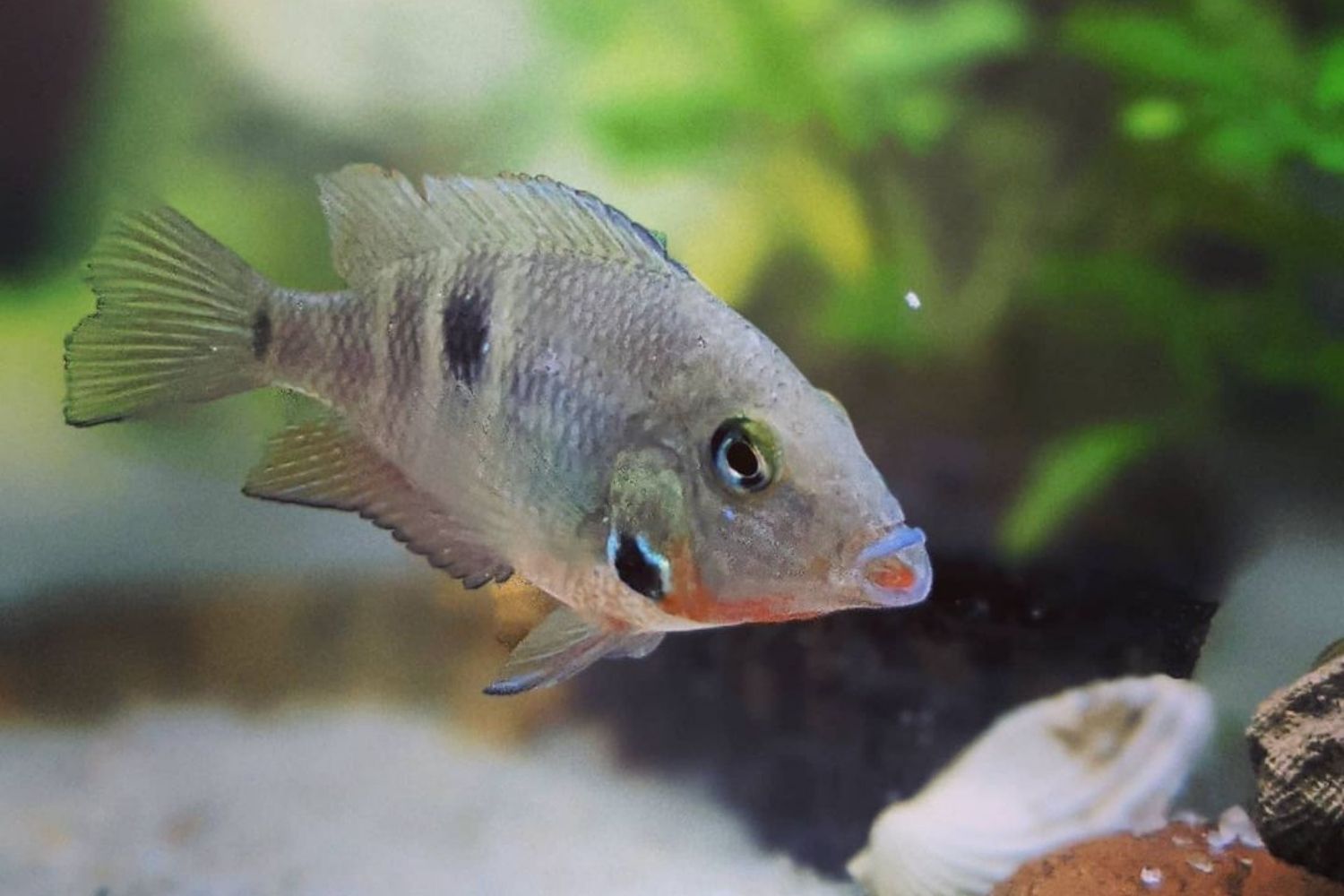
Healthy Firemouth Cichlid tend to live longer.
Another option for them to lay the eggs would be either dried or fresh leaves(big surface area) or other PVC pipes. Just make sure they have enough space to move around easily. Having aquatic plants like Subwassertang or Bacopa Caroliniana in your tank gives them some extra space to lay and hide eggs.
These fish need to have water with a low amount of nitrate and maintain these low levels. The saline levels are suggested to be maintained at 10% since this fish is from a freshwater habitat and requires a similar environment.
Make sure to add plants that can withstand the damage of this fish. In this case, Saggitaria would be great. The lightning amount should be moderate. The flow should be changed at least weakly since this fish tends to stay between the middle and bottom of the tank.
To sum up the whole guide care, here are some important things that will help you set up the aquarium:
- Choose a proper aquarium size.
- Consider the proper water parameters.
- Choose a soft sand substrate.
- Place objects like flower pots, wooden sheets, and dried/fresh leaves.
- Make sure that the fish has enough space.
- Lightning should be moderate.
And you’re good to go. Firemouth Cichlid will love its new home. Besides, you have a more detailed explanation of Aquarium Size, Water Parameters, and other Equipment in the sections below.
Aquarium Size
Firemouth Cichlid requires a lot of space, but for a single pair, an aquarium size with base dimensions of 120 x 30 cm (47 In x 12 In) is acceptable, although larger aquaria work best for them, and 30 gallons of water is the minimum.
As we said earlier, the object in the tank makes a huge difference, and we should consider more space based on the object sizes, such as flower pots, plastic piping, driftwood roots, branches, etc. A natural-looking arrangement of a soft, sandy substrate with smooth rocks would work great for this fish.
Water Parameters & Equipment
Talking about Water parameters, we should consider a temperature of 20 – 32 °C, a pH of 6.5 – 8.5, and a water hardness of 36 – 268 ppm. Firemouth Cichlids are susceptible to long exposure to water temperatures of 28°C or higher, although it is important to know that ‘low to mid-eighties’ (around 27-30°C) promote increased ‘color’ and ‘breeding behavior’. As for salt level, 10% is recommended as this fish is a freshwater species.
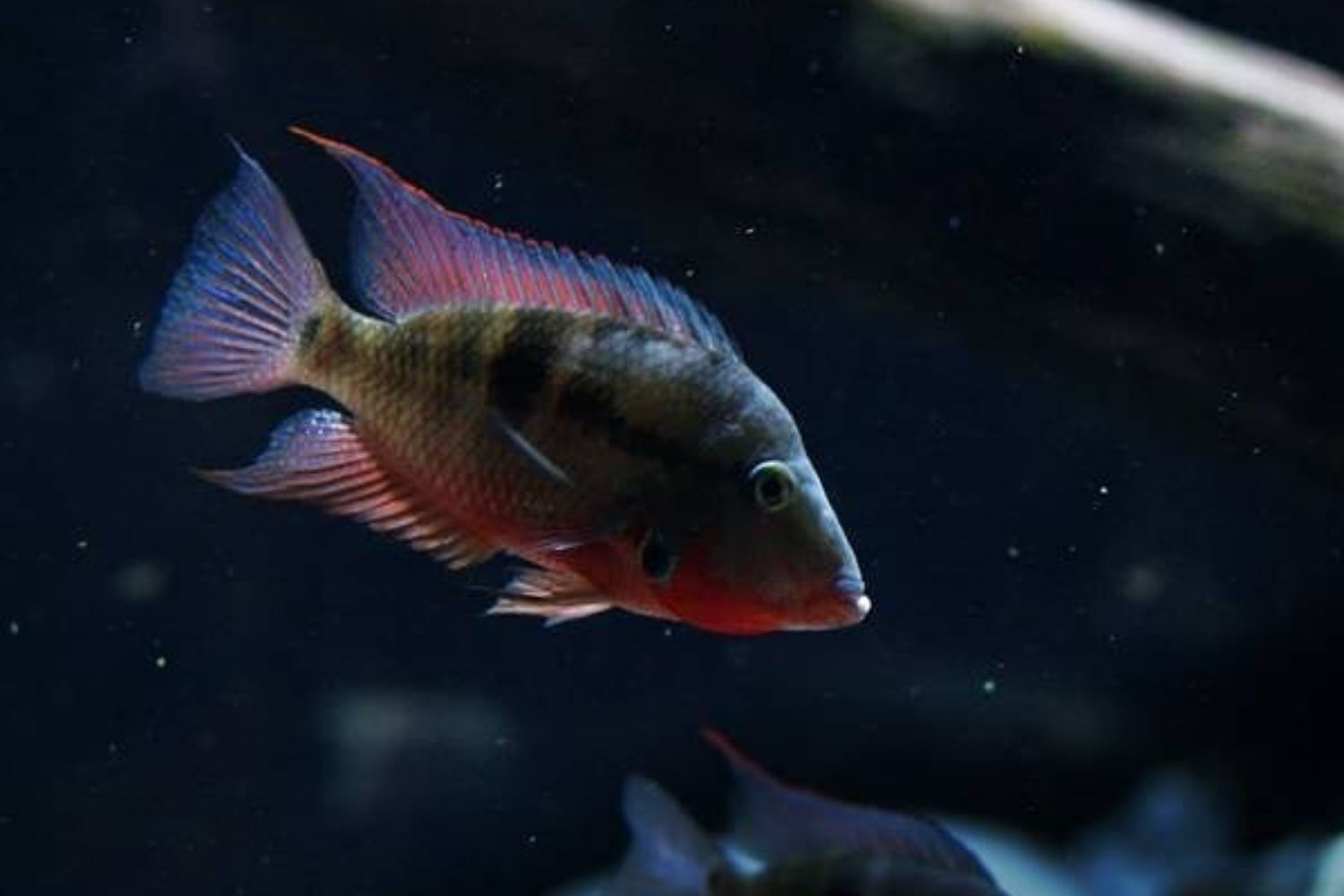
Keeping the right water parameters is essential for Firemouth Cichlid.
As for other equipment, it is important for this fish to have a good water filtration system as it’s essential for its health and well-being. The filtration of your tank will avoid the buildup of nitrogen compounds that harm Firemouths. You need to check the water parameters and have a good water test kit. They are not expensive and will go a long way in analyzing the state of your tank.
Breeding
Firemouth Cichlids are easily bred when meeting good conditions. In their wild habitat, they tend to breed seasonally, but when in a tank, the breeding process does not have any specific trigger. It is important to maintain a regime of a good diet and proper water conditions, and also provide space for the fish to favor breeding.
It is best to start with a group of young Firemouth Cichlids and let them pair themselves. As soon as they pair, you should be careful and separate them from other fish. The laying of eggs is very important, and this is why you should choose various flat objects to keep in your tank when waiting for this moment.
These fish normally lay their eggs on flat surfaces (check for the mentioned objects in the sections above) would work best for this phase. Besides those types of objects, they might also lay their eggs on the aquarium glass.
The spawning process consists of the female laying one or more rows of eggs, and after that, the male fertilizes them. This process happens several times until the female has laid all its eggs which can be hundreds of them. The female stays close during the incubation, the male defends the territory, and the parental care continues for several weeks after hatching. The newborn fish can swim 5-7 weeks after post-spawning.
Common Problems When Breeding
The young or inexperienced pairs of Firemouth cichlids may eat the first brood(s), especially if they feel threatened or disturbed by other fish. A good solution for this problem would be separating them from other fish and not disturbing them, doing so will make them feel safe.
If you maintain adults in a community situation, the eggs can be in danger. It is important to separate the pair from other fish and remove the eggs in a safe place, build a wall/border to separate the aqua space, or either remove the other fish from the tank.
Sex Difference
Young Firemouth Cichlids are difficult to sex with, although adult males tend to grow larger than females. Alternately, females display a larger and rounder belly. The males develop more extended dorsal and anal-fin filaments and have more intense colors than females, especially in the spawning period.
Diseases
When talking about diseases, Ich is the most common trouble that a Firemouth can have. This condition is caused by a parasite called Ichthyophthirius multifiliis. The primary symptoms of Ich are white spots on the skin, slow or lazy movement, and a suddenly reduced consumption pattern. You can also notice the fish rubbing over objects because of the itching sensation. This disease is highly contagious, and it is important to treat the whole tank instead of the one fish.
Gill Flukes is another disease that affects the gills of the fish and tends to swell them up. It creates a layer of slimy membrane, blocking the openings and making it so difficult to breathe for the fish. You can notice the fish gasping to breathe and the slimy membrane in their body.
Treatments: The Ich can be cured by increasing the temperature of the water or by increasing the salt content, and adding a potassium permanganate will help with the Ich. The best treatment for Gill Flukes is again potassium permanganate before it is spread to other fish. To help these fish not get threatened by these diseases, it is important to clean new objects and be careful on adding new fish by investigating their health issues.
Tank Mates
As we said earlier, Firemouth Cichlids tend to be semi-aggressive, but this doesn’t stop them from sharing their tank with other fish. There are several fish that can go well with this species even though their aggressive temperament. As long as you give them enough space by choosing a large tank, they will get along great.
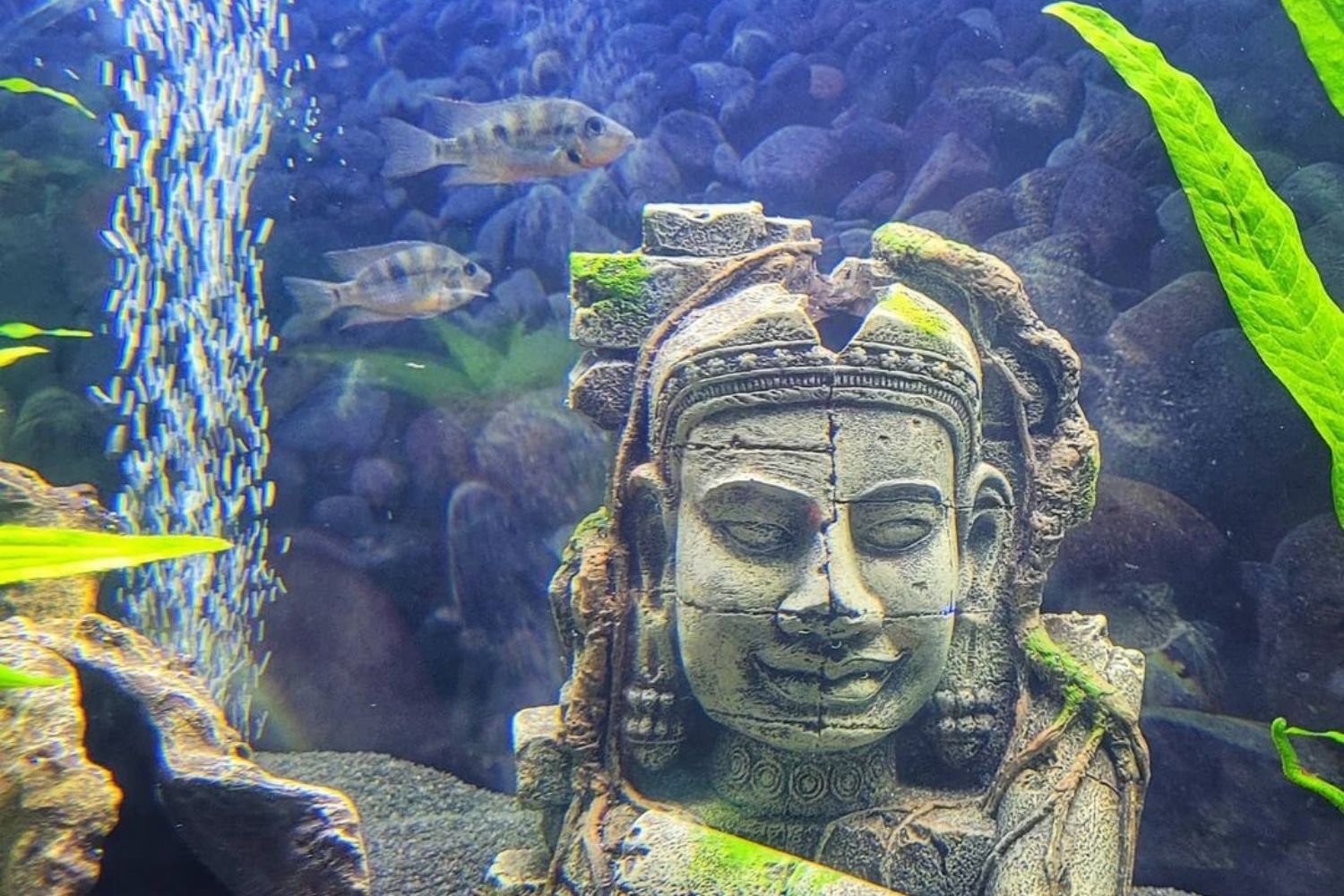
Into our aquarium, we keep Firemouth Cichlid in groups of 2-4.
Firemouth cichlids don’t fight with other peaceful fish unless they feel disturbed or provoked by them. The similarly sized fish that aren’t aggressive are great tankmates to start with. Others that are smaller tend to be picked on by other larger fish, and even if they don’t get hurt by them, they will still make experience a constant state of stress which is not good for them.
Here is a list of Firemouth Cichlid tank mates to start with:
- Similarly-sized mellow cichlids (like the Peacock Cichlid, Jack Dempsey Cichlid, etc.)
- Rainbowfish
- Rummy Nose Tetra
- Clown Pleco
- Bristlenose Pleco
- Black Moor Goldfish
- Pictus Catfish
- Panda Loach
- Platies
- Swordtails
Although, there are plenty of other fish that get along very well with Firemouth Cichlids.
Conclusion: Can You Keep Firemouth Cichlid in Your Tank?
Firemouth Cichlid is a stunning fish that will enchant your tank with its amazing colors. If you are experienced with aquariums and fish, keeping a Firemouth Cichlid won’t be a problem for you. Even if you are a beginner, If you follow the instructions and maintain the proper environment for this fish, keeping up with the diet and other caring tips, it won’t be difficult to maintain this fish. With the proper conditions, which are not difficult to maintain, this fish will grow healthy and add brightness to your aquarium with its colors.
